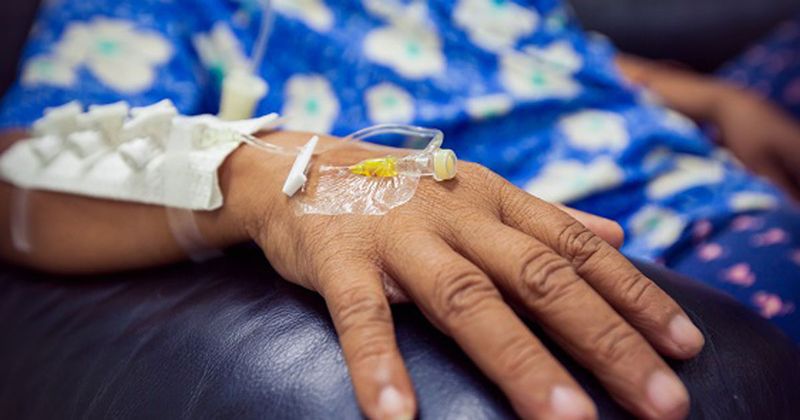TACE plus microwave ablation shows comparable survival, ‘better tumor control’ for HCC
Transcatheter arterial chemoembolization alone and with microwave ablation yielded comparable overall survival rates in patients with recurrent small hepatocellular carcinoma after resection, per research in BMC Gastroenterology.
However, the combined treatment had better tumor response rates at early follow-up and may extend progression-free survival time.

“Repeat hepatectomy is an effective treatment for [small HCC] recurrence; however, it is limited by the patient’s general condition, remnant liver volume, tumor distribution, liver
function and tumor’s invasiveness,” Jie Ji, MD, of the department of interventional radiology at The First Affiliated Hospital of Nanjing Medical University in China, and colleagues wrote. “Mini-invasive therapies, such as radiofrequency ablation, microwave ablation and [transcatheter arterial chemoembolization], have emerged as alternative treatments.”
To evaluate the effectiveness of emerging treatment options, researchers reviewed data from 45 patients with recurrent sHCC ( 3 cm) who were treated with transcatheter arterial chemoembolization alone (TACE; n = 28) or with microwave ablation within 2 weeks of TACE (TACE-MWA; n = 17). All patients underwent procedures at a single center from June 2015 to January 2020. The median follow-up time was 44.1 months.
Using modified Response Evaluation Criteria in Solid Tumors to assess radiological response after treatment, Ji and colleagues reported the TACE-MWA group had objective response rates of 100% at 1 month, 88.2% at 3 months and 82.3% at 6 months compared with rates of 71.4%, 60.7% and 50%, respectively, for the TACE group. The TACE-MWA group also had higher rates of progression-free survival at 1, 3 and 5 years compared with the TACE group (76.5% vs. 56.1%, 70.6% vs. 15% and 70.6% vs. 15%, respectively).
“The reason why TACE-MWA achieved better tumor control than TACE alone may lie in the synergistic effect of these two treatments,” Ji and colleagues noted. “First, TACE could reduce the heat-sink effect of ablation by obstructing the tumor-feeding artery, thus in turn enhancing the coagulation effect of MWA. Second, chemotherapy agents may cause a heat-sensitizing effect and thermal injury may sensitize tumors to the chemotherapeutic agents. Third, lipiodol was deposited in the tumor and peri-tumor margin after TACE, which could help to accurately assess the tumor size and facilitated the subsequent ablation. In addition, TACE also could help to control these micro-lesions, reducing the recurrence of tumor.”
However, researchers reported similar overall survival rates at 1, 3 and 5 years for both groups: 100%, 82.1% and 61.5%, respectively, for the TACE-MWA group and 89%, 58.1% and 50.8% for the TACE group.
Investigators observed no major complications related to treatment in either group and reported significantly fewer re-TACE sessions for the TACE-MWA group compared with the TACE group.
“TACE and TACE–MWA may lead to a similar [overall survival] in patients with recurrent small HCC after resection,” Ji and colleagues wrote. “However, TACE–MWA had better 1-, 3-and 6-month tumor response rates and may prolong tumor [progression-free survival] time.”
